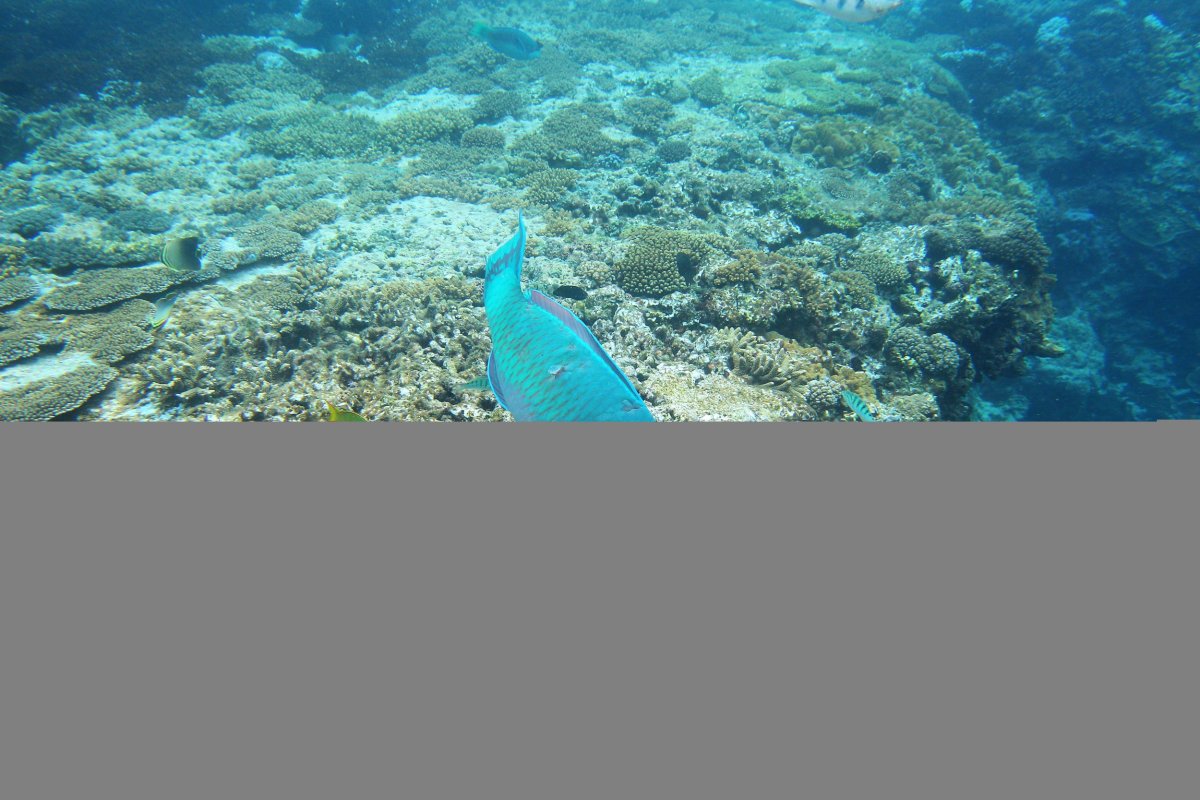
Updated | Parrotfish live on a diet of coral. As you can imagine, this could do a real number on their little teeth, but new research has revealed how these sea creatures evolved to avoid breaking their chompers every time they chow down. As a result, parrotfish teeth are some of the stiffest, hardest, and most abrasion- and fracture-resistant gnashers found on the planet.
Arguably, one of the best parts about visiting a beach is digging your toes in the sand, but have you ever wondered where all these grains came from? Turns out, the majority of sand grains found on white sand beaches, such as those found in Hawaii, are actually parrotfish poop. The parrotfish eat coral, and when the coral comes out the other end, we get smooth white grains of sand.
Related: A 9-pound crab breaks seabird's wings before eating it alive
"I was reminded that this is a fish that crunches up coral all day, and is responsible for much of the white sand on beaches," study co-author Matthew Marcus, a staff scientist at Berkeley Lab's Advanced Light Source said in a statement. "But how can this fish eat coral and not lose its teeth?" Recently, a team of international scientists set out to answer just this.
The team, made up of scientists from Lawrence Berkeley National Laboratory, Nanyang Technological University in Singapore and the University of Wisconsin-Madison used a Berkeley X-ray machine known as the Advanced Light Source (ALS) to look at parrotfish teeth. They also used a technique known as polarization-dependent imaging contrast (PIC) mapping to further examine the teeth. PIC was developed by study researcher Pupa Gilbert, a biophysicist and professor in the Physics Department at the University of Wisconsin-Madison, and allowed the researchers to see the parrotfish in a way previously not possible.
Related: Massive lobster claw found off coast of Wales hints at giant crustacean living in water
The analysis showed that parrotfish teeth have a truly unique structure. The fish have more than 1,000 teeth arranged in about 15 rows. These teeth grow continuously, much like a shark's, and on a microscopic level, are made from crystals formed from the mineral fluorapatite and each fluorapatite crystal is composed of calcium, fluorine, phosphorous and oxygen.
However, it's not what the teeth are made out of but rather how they are arranged that gives them their astonishing strength. Each crystal measures 100 nanometers (billionths of a meter) wide and several microns (which are a millionth of a meter) long. They are woven together into bundles measuring only about 5 microns at the base to about 2 microns toward the tip. Like a cloth, these bundles are woven together, aligned at right angles side by side, Live Science reported. As a result, the otherwise harmless parrotfish was able to evolve some of the strongest teeth on the planet.

The finding is exciting, not only because it answers the question of how the fish are able to eat rocks without breaking their teeth, but also because their tooth structure could be mimicked to design stronger materials for humans.
"We still need to figure out how, exactly, the microstructure of the parrotfish teeth manages to make them so incredibly fracture-tough and abrasion-tough, then we will be able to harness and use those concepts for synthetic materials, which will be much more durable than anything we use today," Gilbert said in an email, explaining that theoretically, this material could be used in "in any moving parts and joints, from computers to appliances, may be even to cars."
This article has been updated to include a quote from Pupa Gilbert.
Uncommon Knowledge
Newsweek is committed to challenging conventional wisdom and finding connections in the search for common ground.
Newsweek is committed to challenging conventional wisdom and finding connections in the search for common ground.
About the writer
To read how Newsweek uses AI as a newsroom tool, Click here.








